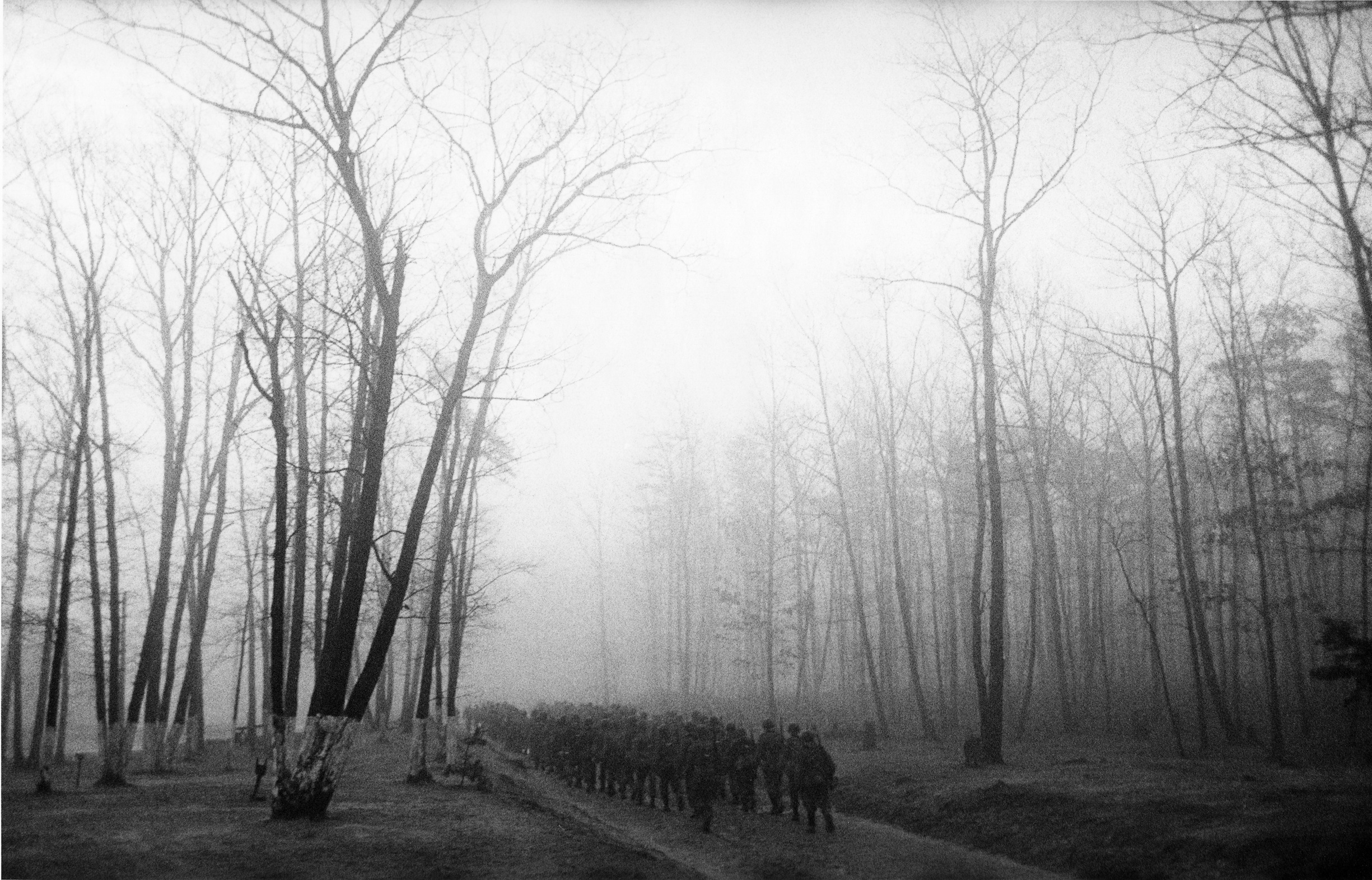Veteran’s Day, the U.S. Postal Service and me

I love art for the people! In a recent blog, I shared how Turkey’s Radyo Acik requested the use of my photograph Coney Island Boardwalk Montage (1950) to brand their Music of the People campaign. I’m happy about that and look forward to receiving one of their posters in the mail! But perhaps the ultimate in art for the people is getting your own postage stamp published! In fact I have always been a bit envious of my good friend, Lance Hidy, a brilliant graphic artist and the designer of five of my color books. He has been commissioned three times by the USPS to create some really stunning stamps. So, when I was contacted by the USPS last spring with interest in the photograph Lone Soldier (1953) to commemorate Veteran’s Day, I was delighted.
Today — Veteran’s Day 2013 — the USPS will be unveiling a special first-day-of-issue cancellation cover using the silhouetted image of the soldier from my photograph. Apparently, first-day-of-issue cancellations are important collectibles for philatelists, and if you’re one of them, you can purchase this at this USPS site.

While my wish to see the photograph in its entirety on a postage stamp didn’t materialize this time around, I’m happy to be in cooperative cahoots with the USPS, and perhaps postage stamps are still in my future! In conjunction with their issuance of a Medal of Honor stamp, the special issue cancellation cover will be released three times: today to honor WWII vets, 2014 to honor Korean War vets and 2015 to honor Vietnam War vets.

I was drafted in the Korean War in 1952 when I was 21. By the time my company finished basic training and arrived in Korea, the war was already winding down. This year was the 60th anniversary of the Korean War armistice and I wrote a more extensive blog about my own experiences as a GI that I posted in July. As I said then, I sustained a minor injury on the front, which brought me back to Pusan to live out my remaining time as an illustrator at Army headquarters. Thus, it wouldn’t be accurate to describe my Korean photos as traditional war photography (except for a very few photographs from the front). However, what my Draftee portfolio tries to convey is the every-day experiences of young draftees leaving home for the first time, undergoing the sudden rigors and anonymity of basic training and preparing to head into combat. I was most drawn to show the close bonds forged between fellow GIs as a way to lighten the heavy emotional burden of going off to war.

Veteran’s Day is a national holiday that was instituted by a Congressional Act in 1938. It made the 11th of November in each year a legal holiday and the declaration says it’s:
“a day to be dedicated to the cause of world peace and to be thereafter celebrated and known as ‘Armistice Day’.”
William Tecumseh Sherman, a Union general during the Civil War, got it right when he said: “War is hell.” Apparently the full quote delivered to the graduating class of the Michigan Military Academy in 1879 was:
I’ve been where you are now and I know just how you feel. It’s entirely natural that there should beat in the breast of every one of you a hope and desire that some day you can use the skill you have acquired here. Suppress it! You don’t know the horrible aspects of war. I’ve been through two wars and I know. I’ve seen cities and homes in ashes. I’ve seen thousands of men lying on the ground, their dead faces looking up at the skies. I tell you, war is Hell!

On this Veteran’s Day, I’m glad to be reminded of the original declaration made by Congress in 1938, and share a few more of my photographs to honor the cause of world peace.





This PBS documentary, The American Stamp, tells the story of inspiration and imagination behind the designing of U.S. postage stamps.
Graphic artist, Lance Hidy, designer of five of my books (and a neighbor!), had a small book published entitled Designing the Mentoring Stamp, which shares the process he went through in creating his first stamp for the USPS.
Judith and I recently watched a terrific film that I highly recommend to everyone. The Mexican Suitcase (directed by Trish Ziff) tells the story of the 4500 lost negatives of Robert Capa, Gerda Taro and David “Chim” Seymour, three photographers who went to Spain to “fight fascism with their cameras.” Of course Capa is known as perhaps the most important war photographer of the 20th century, but the film is about so much more than the photographs and photographers themselves, as important as they are. It juxtaposes the photographs themselves with stories from the war’s survivors and the under-appreicated role of Mexico in allying against facism during and after the war. An important film documenting the intersection of war and photography.
Hi Uncle, I remember when you were at Fort Dix as a soldier in training. I remember when our garage door in Brooklyn would open and a siloutte of that soldier was cast on the door as it closed. I remember the sound of the mechanical meat slicer back and forth as salami and bologna peeled off and made it into the best sandwiches for sale at the barracks after the return back. I remember my surprise as my uncle who lived in a world of shadow was suddenly shipped off to Korea, another place beyond this young teen’s imagination.… Read more »
The photos are brilliant! Poignant and powerful!
Hello Harold,
Highly important work! I have brothers who served, WWII, Guam, Korea, Vietnam. Korea hasn’t received the photographic due-process. Powerful and unique perspective. Thank you so much! And congratulations on the USPS stamps, real memorials as well.
